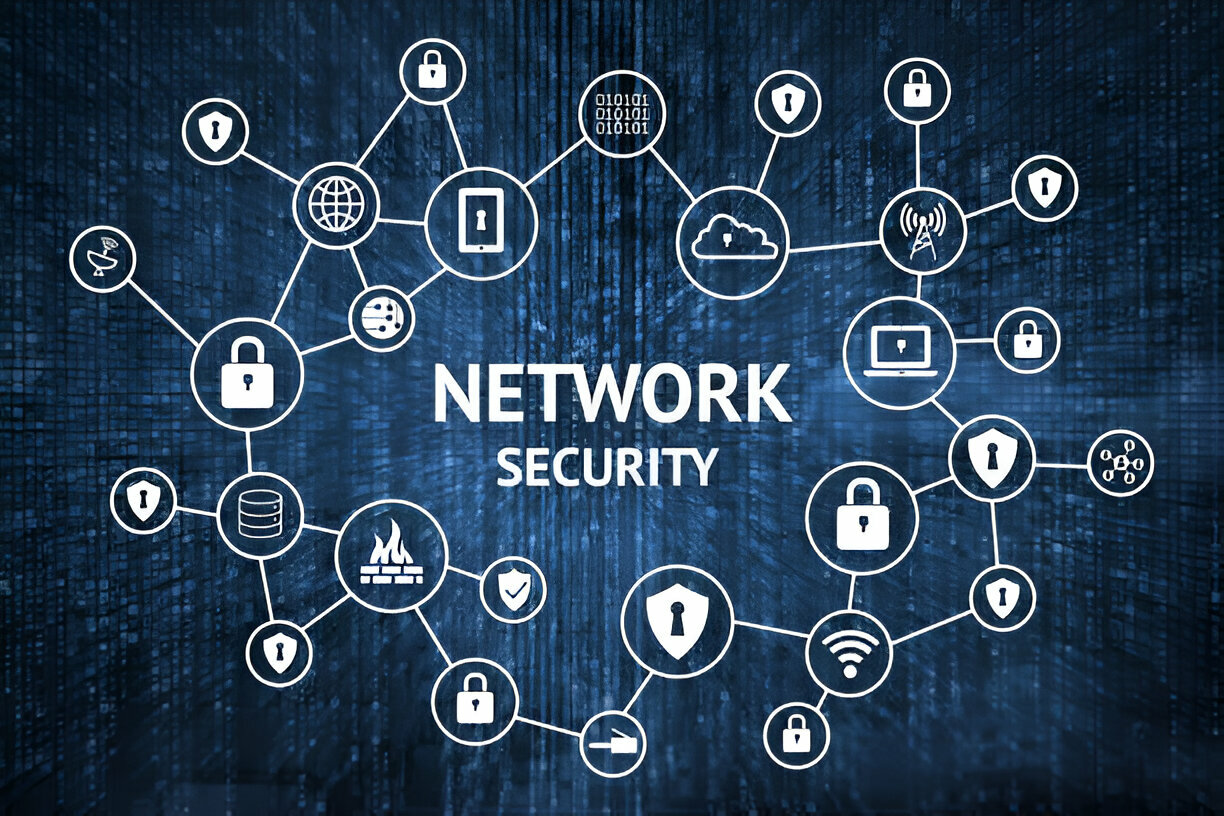Today’s digital economy presents new businesses with numerous cyber risks that threaten data, disrupt operations, and damage their reputations. Small and medium-sized enterprises (SMEs), in particular, often become targets of cybercriminals who exploit perceived weaknesses in their security infrastructure. This makes network security an integral consideration when starting up any new enterprise or expanding an existing one. Establishing an effective network security plan from Day one is the only way to protect assets while guaranteeing future business longevity and growth.
This guide presents an exhaustive network security checklist to assist new businesses in protecting their systems and data.
1. Conduct a Risk Evaluation
Every business faces unique vulnerabilities depending on its operations, data handling processes, and online presence. Conduct a risk evaluation to identify possible threats against your operations and areas requiring protection. Identify which assets are integral to operations, which types of data need protecting, and which risks they pose to each kind. You can always get managed IT services in America to do your job.
Essential Steps:
- Outline your network infrastructure.
- Locate critical assets, including servers, databases, and sensitive information.
- Prioritize potential vulnerabilities while setting acceptable risk thresholds.
2. Create a Network Security Policy
A detailed network security policy can serve as the blueprint for employees, contractors, and other stakeholders when it comes to maintaining security. Your policy should outline procedures such as password management, acceptable device use policies, and incident response protocols. Documenting these policies will set clear expectations while helping prevent security breaches caused by human error.
Essential Steps:
- Establish guidelines regarding acceptable device and internet use.
- Set out access control policies (who has access to what information).
- Prepare an incident response plan outlining steps you will take if a breach does occur.
3. Implement Strong Password Policies and Multi-Factor Authentication
Weak passwords remain one of the primary causes of security breaches, and implementing strong password policies and multi-factor authentication (MFA) is an essential way of strengthening network security. Encourage employees to create complex passwords regularly that they change as part of an MFA solution while avoiding sharing common ones across services or sites. You can also book Crystal Lake’s network security services for top-tier security.
Essential Actions:
- Require passwords that include uppercase letters, lowercase letters, numbers, and special characters such as dashes (-).
- Encourage password managers to manage complex passwords securely.
- Implement multi-factor authentication on applications or systems where security may be an issue.
4. Secure Wi-Fi Networks
Securing the Wi-Fi networks used at businesses’ physical locations is crucial to preventing unauthorized access. Make sure they’re encrypted with strong passwords, and use public Wi-Fi only when absolutely necessary, as these networks may be more vulnerable than private Wi-Fi to attacks and viruses.
Essential Steps:
- Utilize WPA3 encryption on all Wi-Fi networks.
- Establish a guest network as an extra level of protection.
- Regularly upgrade router firmware updates to protect against vulnerabilities in its current state.
5. Set Up a Firewall and Intrusion Detection System (IDS)
Firewalls and IDS systems are vital elements in any network security infrastructure. They serve as a first-line defense by blocking unapproved access and tracking suspicious activities on your network. Together, these tools protect businesses against both external and internal threats. We provide expert firewall installation in Rockford, IL network security services.
Essential Actions:
For comprehensive protection, both hardware and software firewalls should be utilized simultaneously, configured to block access to potentially malicious websites, and implemented IDS systems to monitor for suspicious network activity or threats that might present themselves.
6. Keep Your Software and Hardware Current
Outdated software and hardware can provide cybercriminals with easy entry points into your systems. Critical security patches are necessary to keep up with new vulnerabilities and stay protected against potential dangers. Setting automatic updates may ensure continuous protection.
Essential Actions:
Schedule regular software updates—including operating systems and applications—across your business environment, replace or upgrade hardware that is no longer receiving security patches, and monitor vendor notifications about updates related to business software and hardware.
7. Implement Data Encryption
Encrypting sensitive information adds another level of protection against cybercrime; even if they gain entry to your systems, cybercriminals won’t be able to read or use your information without knowing your decryption key. For maximum effectiveness, keep data encrypted at all times, both at rest (when stored locally) and in transit (when traveling over networks).
Essential Actions:
- Employ end-to-end encryption when transmitting sensitive data over any communication channel.
- Encrypt data stored on business devices, servers, and cloud storage services; train employees on best practices for handling and transmitting encrypted files.
8. Maintain Regular Backups
Regular data backups can protect your business from cyber incidents like ransomware attacks. Even in case of a data breach or loss, regular backups ensure that business operations will quickly resume.
Essential Actions:
- Draft a backup schedule tailored specifically to your business’s data needs (daily or weekly, for instance).
- Store backups securely using both on-premise (local storage) and off-premise (cloud) storage options, preferably both.
- Prufrestore backup restorations periodically to verify data integrity and accessibility.
9. Provide Employee Training on Cybersecurity
Human error is one of the main contributors to security breaches, so teaching employees the basics can significantly decrease accidental breaches. Training should cover topics like recognizing phishing emails, handling data correctly, and creating strong passwords.
Essential Actions:
- Conduct regular cybersecurity training sessions for all employees.
- Instruct them on how to recognize and report phishing attempts.
- Provide updates regarding new threats while regularly reinforcing security practices.
10. Restrict Access Based on Need-to-Know
Not every employee requires access to every part of your network. Implementing access controls based on roles can reduce risks related to unapproved access while mitigating damages if an intrusion occurs.
Essential Actions:
Foremost is assigning roles and permissions based on each employee’s job function, network segmentation to isolate sensitive information, and regularly reviewing access permissions as employees’ roles change.
Final Thoughts
Establishing a secure network security foundation as part of any new business endeavor is paramount for protecting assets and creating trust with customers and employees. Cyber threats evolve constantly, so your network security practices should also regularly adapt to address current or new threats. By adhering to this checklist and remaining vigilant, you can safeguard both employees and customers by creating a safe environment in which everyone feels at ease doing business together.
Proactive network security prevents data breaches and shows your commitment to upholding client and partner privacy and safety. As your business expands, constantly reinforcing and updating network security plans will remain key to staying ahead of cybercriminals.







